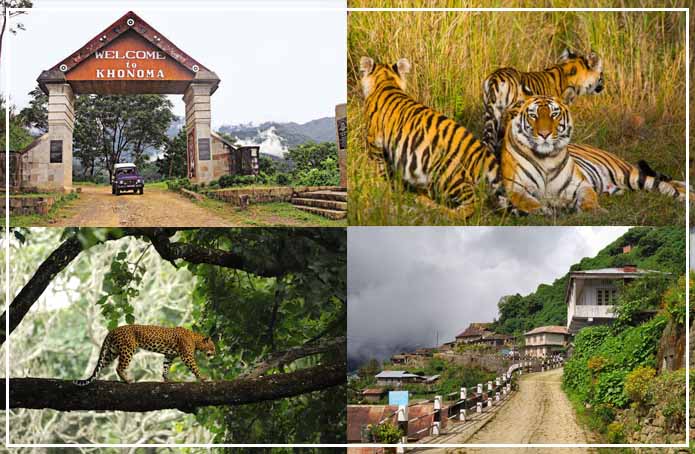Khonoma Village: Hunting is the natural way of living for the states where vegetative production is not sufficient. A complete ban on hunting and logging might risk the livelihood. Yet, the ancestors of Khonoma-Asia’s first green village decided to change their fate. Why?
What Made Ancestors Take the Momentous Step? (Khonoma Village)
The dauntless Angami tribe imposed a conservation effort over 3000 residents of Khonoma village, turning 20 square kilometer forest land into Khonoma Nature Conservation and Tragopan Sanctuary (KNCTS).
“The ban on hunting and logging was imposed by our elders, as people realized it was high time to preserve the environment for the next generation.” Says general secretary of Khonoma Youth Organization (KYO), Hekho Chase.
The initiative began in December 1998, when 300 endangered Tragopan Blythii were killed as a part of hunting competition in Khonoma. The large scale killing alarmed the wildlife conservationists and the village elders to take strict action against the practice. From here the journey to Asia’s first green village began.
The Aftermath
The simultaneous ban indicated a massive change in the lifestyle of people who have been residing there for ages. There was heavy opposition from the villagers, as journalist Anne Pinto says that convincing the people was the hardest part.
“Almost all families were hunting before the ban and around 20-30 households were dependent on it” says a 46-year-old resident from Khonoma named Vilhu Zhunyu (Khonoma Village Kohima). But some anonymous people said that hunting still takes place for the love of the game, though on a very small scale.
Fight Against Hunters
The Khonoma village, which rose from ashes during Anglo-Khonoma and Indo-Naga battles of the 1950s, did not give up its conservation idea and traveled through the loop of time from repetitive British assaults to Asia’s first green village.
“We heard lot of gunshots in December last year and this January and February” says NeikedolieHeikha, chairman of the eco-tourism management committee of Khonoma adding “it was the worst time since the ban was imposed and villagers knew something was wrong and it was time to act”
“the village decided to increase the fine amount of hunting from Rs 3000 to Rs 10,000 per person. There is also a provision for the shooter’s gun being seized for a year” saidHekho Chase. “Gun use is allowed only when animals like wild dogs attack cattle, special permits for guns are issued in fruiting season of jhum cultivation. Guns can be used against deer, bears, porcupines and wild boar if they destroy crops”.
Public Support
The village today is actively involved in the conservation of its flora and fauna. Under the sponsorship of Khonoma Students union, the children between the age of 4-16 years clean the village every month on Saturdays. Not a single bit of paper is found on streets as waste dumping bins are available at regular intervals.
“Now everyone has shifted to farming. I haven’t hunted since the ban” says Zhunyu. Gradually people accepted their new lifestyle. To his statement, Heikha adds “ before the ban we had bird catching festivals, after the ban farmers are complaining of bird destroying foxtail millet. People are making sacrifice of tradition and cultivation for conservation”
Though the village looks ancient, Khonoma people not only opted for sustainable development but also adopted new technology for greater harvest sticking to its cultural roots simultaneously.
Results
Twenty years after the initiative, the tribe’s efforts finally grabbed international attention. The Herculean efforts by the village, which is 20 miles away from its capital, made it Asia’s first green village, setting an example to be followed by the rest of the country to protect its heritage.
Government of India awarded Khonoma a ‘Green Village project’ in 2003 and ‘Green Village’ tag in 2005 but it took few more years to reach international standards.
The combination of age-old techniques and ban on hunting and logging gave rise to international interest. Other countries are adopting the same conservation techniques (Khonoma Village).






















